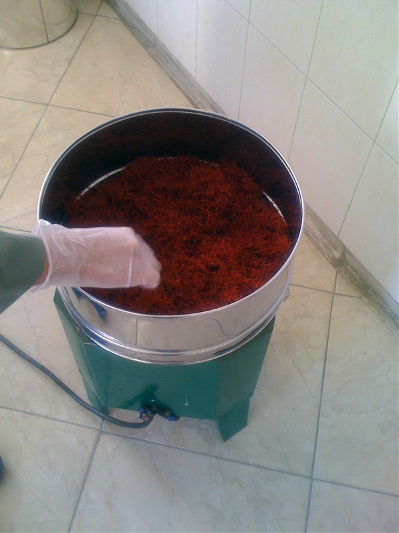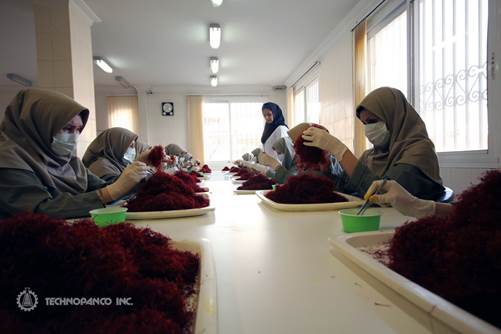Saffron grows from corm bulbs which are planted in rows or clusters. Bulbs are planted from late spring till early autumn, but the best time for planting saffron is recommended to be late spring. The bulbs are first put within 15-20 cm depth in the soil and then they are irrigated. The bulbs should be planted deep enough in order to be protected from external heat or frost.
Crop
protection:
 Saffron
doesn’t need much water that is why it is best grown in dry climate Depending
on the weather conditions. Irrigation start between mid-September and the end
of October. The flowering stage of the product depends to a great extent on the
first irrigation process.
Saffron
doesn’t need much water that is why it is best grown in dry climate Depending
on the weather conditions. Irrigation start between mid-September and the end
of October. The flowering stage of the product depends to a great extent on the
first irrigation process.
The field is
irrigated in a way that rows of saffron do not reach their peak at the same
time, which makes the harvesting process easier. The field is watered once
every 12 to 24 days (depending on the weather conditions); except when the
field receives sufficient supply of rain.
The third
irrigation is done after ploughing, weeding and fertilizing the soil with
chemical or organic fertilizers. Ploughing the field is done carefully so the
bulbs are not damaged, meanwhile this process loosens the soil and makes it
easier for bulbs to grow out of it. Fighting weeds is one of the main
challenges of saffron growers, they are using a combination of mechanical and
chemical methods to control the weeds in the field.
Saffron
flowers are harvested manually in mid-autumn. As soon as flowers bloom, they
are picked in the early morning hours. Then the flowers are carried to the
farmers houses and there the saffron
stigma is separated from other parts of the flower .The collection and transfer
of the flowers should be carried out in clean and dry straw baskets, avoiding
any mechanical pressure. It is important to know that the sooner the separation
of saffron filament from the rest of the flower happens, the better quality
obtained. The stigmas separated from the flowers should be dried as soon as
possible.
Drying:
Saffron stigmas collected from the flowers are spread over wire sieves. Special heaters are used under these sieves. The heat should be under control not to exceed 65o C. Saffron in this method is dried in 45 minutes.

Drying of Saffron
Packaging:
After drying and sorting, saffron is ready to be packaged. Factors that we should consider while preserving the products are:
- moisture content of dried saffron
- ambient temperature
- amount of sun light
- oxygen

Sorting of Saffron